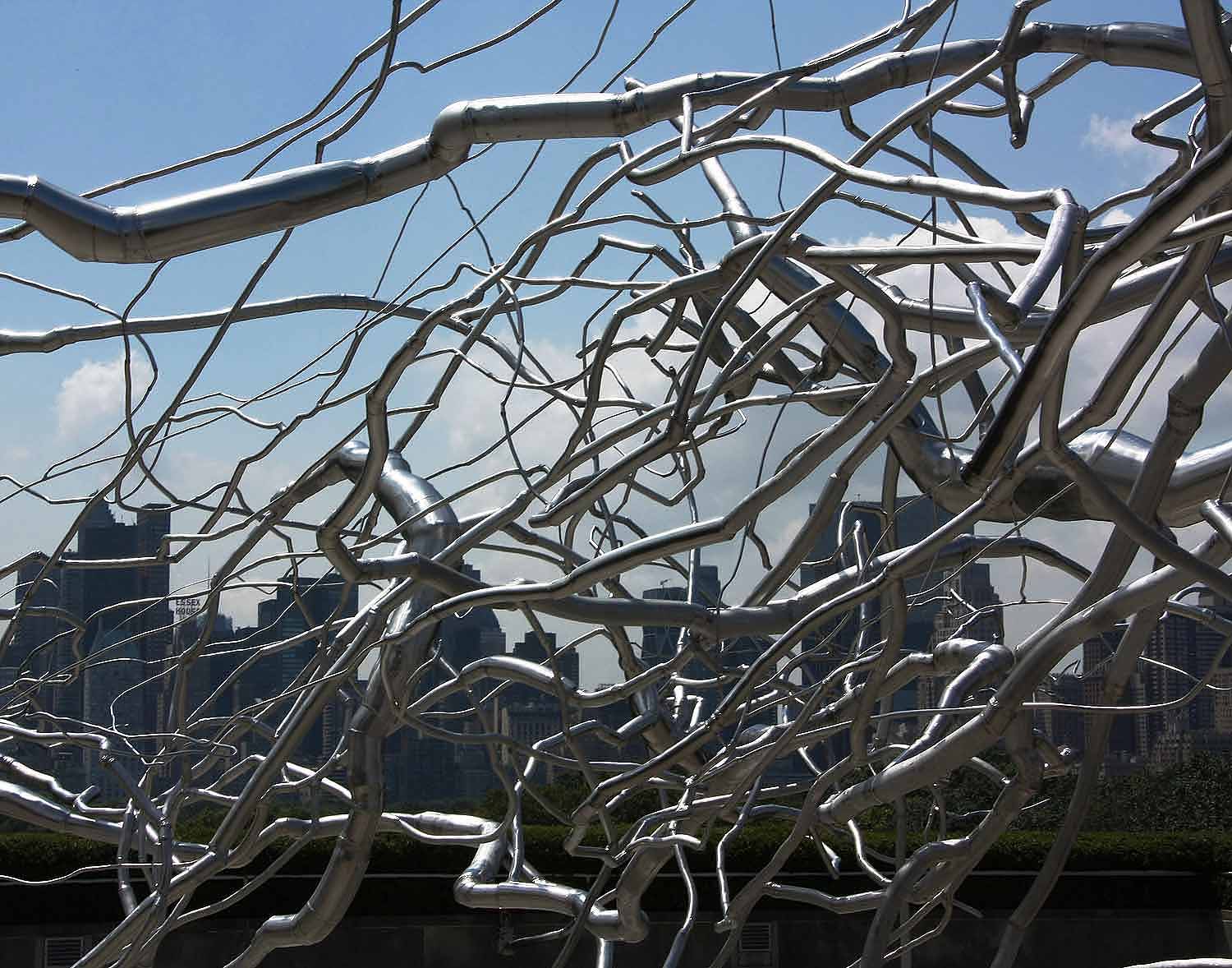
Roxy Paine\'s Maelstrom
Maelstrom, Roxy Paine’s magnificently intricate installation currently on the roof garden of the Metropolitan Museum of Art, is to date the most prominent offspring of a rapidly evolving typology, lifesize tree golems rendered in stainless steel. Paine manages to steer these leafless “Dendroids,” as he calls them, between the Scylla of transparency and the Charibdis of mechanization, unyielding hazards to authorship of his own contrarian devising established by two other families of sculpture. On one side are Paine’s “Replicants,” portraits of notorious, untrustworthy plants and fungi fixed in eternal plastic with an exegetical fidelity to surpass the craftsmanship of the best diorama and Hollywood prop technicians. Here the hand dissolves like the Cheshire Cat around the grin of its expertise. But looming off to starboard are the industrial prototypes that have been tuned to glop, dip, carve, or spray potentially numberless unique artworks, induced but not touched by the artist.
Most disconcerting about these machines is how undeniably ravishing are the objects they produce. The minimalist stalactites of Paint Dipper, the scholar’s canyons of Erosion Machine, and the impeccably grotesque, groovy meltdowns of SCUMAK, for example, flout the prerogatives of painting and sculpture not merely with sly, assembly-line standardization but in manifesting a literal and figurative gravity to die for. Neither accidental nor pre-determined, rather the emanations of carefully calibrated tolerances prodded by stochastic input, these formidable, ever-machining editions should make contemporary painters and sculptors tremble on qualitative, not just quantitative, terms.
Fortunately for the post-post-humanists among us, the Dendroids point the way past endgame perils to open sea, in part by locating an improbable wiggle room in the otherworldly sheen of stainless steel. This unforgiving, perfectionist material can absorb delight in surface mimicry––a shelf fungus here, a splintering fracture there––while also reconstituting organic brachiation within the industrial logic of diminishing diameters of pipestock, thus positing the artist, himself, as art-making machine. With these shimmering “substitutes,” “placebos” and “misnomers” (sampling from a list of the artist’s trickster titles) Paine can succumb as nowhere else to expressive selectivity along a sliding scale of verisimilitude in service to his barbed, alienated narrative.